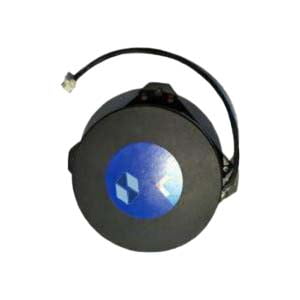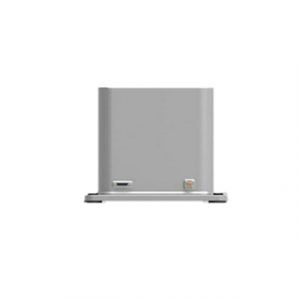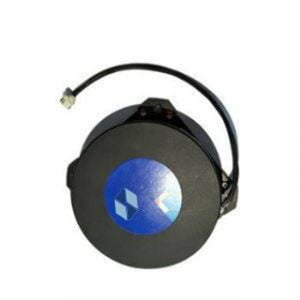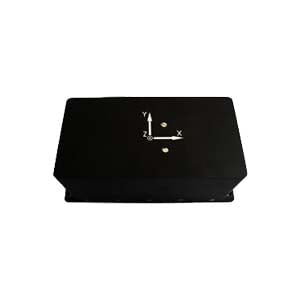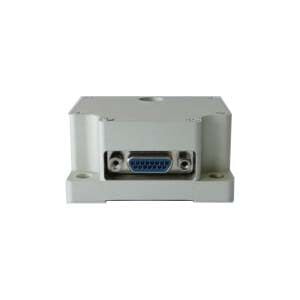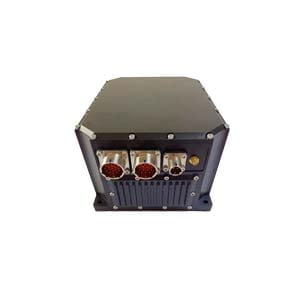The fiber optic gyroscope is a sensitive element based on the optical fiber coil, and the light emitted by the laser diode propagates along the optical fiber in two directions. The difference of light propagation path determines the angular displacement of the sensitive element.
Component:
The fiber optic gyroscope consists of three main parts: the laser, the optical path system and the detection system. The laser produces a high-intensity monochromatic laser, which is divided into two linearly polarized laser beams perpendicular to each other through a complex optical path system, which propagate along two perpendicular directions respectively. The two lasers are reflected and merged again to form an interference image, which is converted into an electrical signal in the detection system.
Working principle:
The realization of the fiber optic gyroscope is mainly based on Sagnac's theory: when a light beam travels in a circular channel, if the circular channel itself has a rotational speed, then the time required for the light to travel along the direction of rotation of the channel is more than the time required to travel along the opposite direction of the channel. That is to say, when the optical loop rotates, in different directions of travel, the optical path of the optical loop will change relative to the optical path of the loop at rest. Using this change in the optical path, the phase difference or interference fringe change of the two optical paths can be detected, and the rotation angular speed of the optical path can be measured, which is the working principle of the fiber optic gyroscope.
Sort:
Fiber optic gyroscopes can be classified in a variety of ways. According to the working principle, it can be divided into three categories: interference type, resonant type and stimulated Brillouin scattering fiber gyroscope. Among them, the interferometric fiber gyroscope is the first generation of fiber gyroscope, which uses multi-turn fiber coil to enhance the Sagnak effect, and is widely used at present. According to different electrical signal processing methods can be divided into open-loop fiber gyroscope and closed-loop fiber gyroscope, generally closed-loop fiber gyroscope because of the closed-loop control has a higher accuracy; According to the structure, it can be divided into single-axis fiber optic gyroscope and multi-axis ray gyroscope, among which three-axis fiber optic gyroscope is an important development direction of fiber optic gyroscope because of its advantages of small size and measuring spatial position.
Advantages:
FOG provides extremely precise rotational rate information, in part because of its lack of cross-axis sensitivity to vibration, acceleration, and shock. Unlike the classic spinning-mass gyroscope, the FOG has no moving parts and doesn't rely on inertial resistance to movement. Hence, this is one alternative to the mechanical gyroscope. Because of their intrinsic reliability, FOGs are used for high performance space applications.Compared with traditional mechanical gyroscopes, fiber gyroscopes have the advantages of all-solid state, no rotating parts and friction parts, long life, large dynamic range, instantaneous start, simple structure, small size, and light weight. Compared with the laser gyroscope, the optical fiber gyroscope has no blocking problem, and it does not need to precision machine the optical path in the quartz block, and the cost is relatively low.
Disadvantages:
FOGs are implemented in both open-loop and closed-loop configurations.
Fiber optic gyroscopes are sensitive to temperature and vibration and require a high level of technical maintenance and calibrationFOGs requires calibration (determining which indication corresponds to zero angular velocity) while ring laser gyroscopes do not (zero beat frequency always means zero angular velocity).
FOG are somewhat sensitive to vibrations while ring laser gyroscope are not.
For more information, please feel free to contact info@ericcointernational.com
More Technical Questions
1.Do You Know Fiber Optic Gyroscope and Its Typical Applications?
2.Application of Fiber Optic Gyroscope
3.Principle and Application of Fiber Optic Gyroscope
4.Application of Fiber Optic Gyroscope in North Seeking System
5.Selection And Application Of Fiber Optic Gyroscope Inclinometer
6.Application of Fiber Optic Gyroscope North Finder
Products in Article
